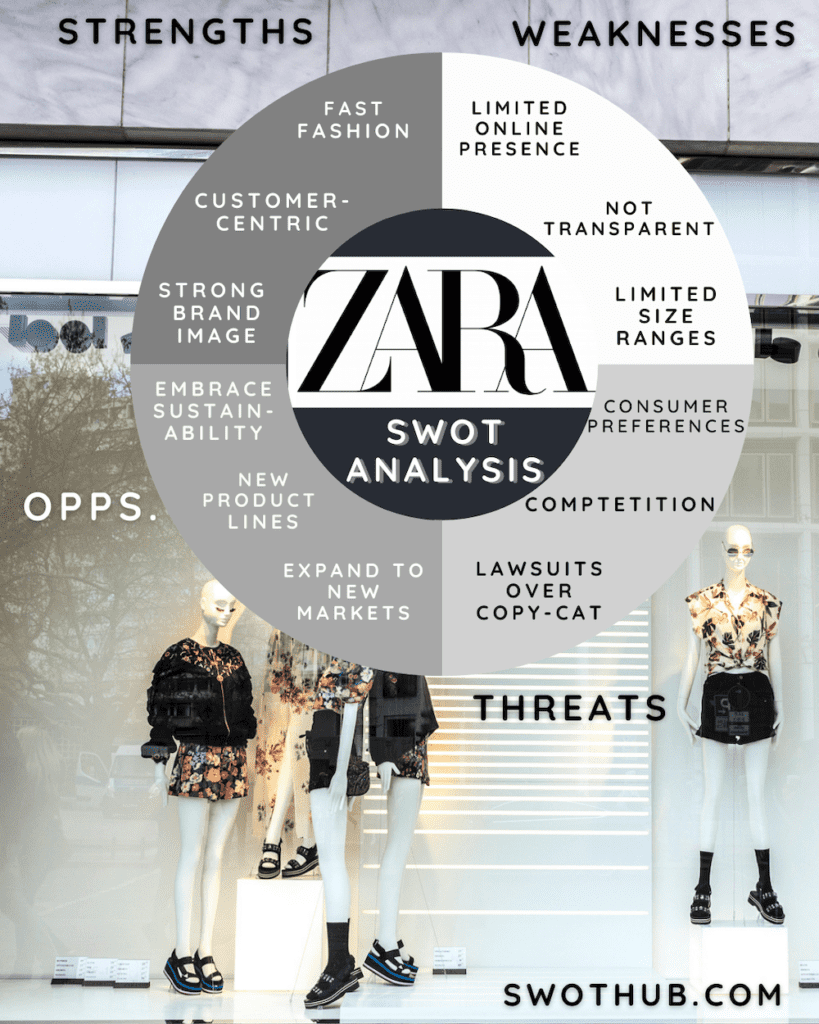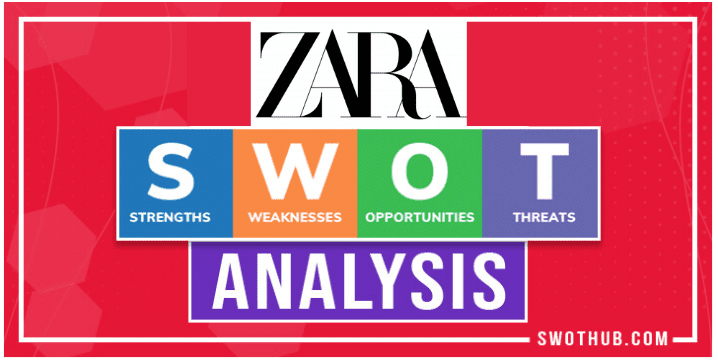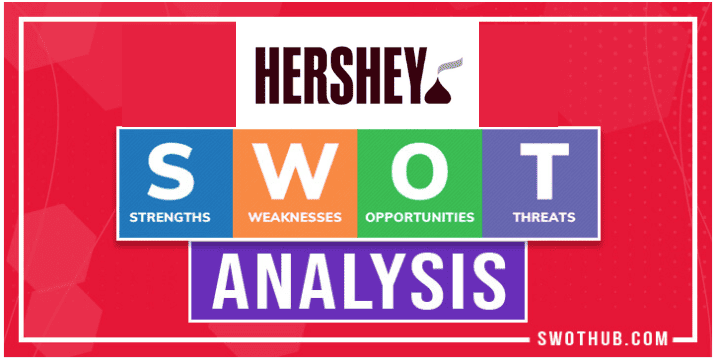The fashion world has become a mecca of designers in the textile industry trying to meet the demands of fashionable consumers worldwide. A Zara SWOT analysis will highlight how Amancio Ortega started from humble beginnings to build a retail empire. Ortega has been dubbed as “the world’s richest man’ as the parent company, Inditex has changed how textiles and fashion have evolved. Some ask, “What are the key challenges of Zara?” See how E-commerce, competition, and sustainability have contributed to Zara’s strengths, weaknesses, opportunities, and Zara’s threats. Zara’s competitors range from H&M to Gucci and all the fashion brands in between want to see Zara fail.
Table of Contents
History of Zara
Zara is a fashion company founded in 1975 in Galicia, Spain by Amancio Ortega. Ortega’s early years were spent working as a delivery boy for a local clothing store, which gave him an insight into the fashion industry. He then began working for a clothing manufacturer where he learned about the production process and the importance of efficient supply chains.
In 1975, Ortega founded Zara with the aim of creating affordable and fashionable clothing for the public. Zara’s business model is unique in the fashion industry, as it relies on a fast-fashion approach that allows the company to quickly respond to changing trends and customer demand. This means that Zara designs produces, and distributes new collections every two weeks, making it one of the most innovative and fast-paced fashion retailers in the world.
Ortega’s approach to fashion design was based on customer feedback and observation. He would visit his stores regularly to see what customers were buying and what they were not. This allowed him to quickly respond to customer demand by creating new fashionable and affordable collections.
One of the keys to Zara’s success is its supply chain, which is based on vertical integration. The company owns its factories and production facilities, which allows it to control every aspect of the production process, from design to delivery. This enables Zara to produce high-quality clothing at a low cost, which is then sold at affordable prices to its customers.
Zara’s success has made it one of the largest fashion companies in the world, with over 2,000 stores in 96 countries. Amancio Ortega’s entrepreneurial vision and innovative business model have made Zara a global fashion icon, and his legacy continues to inspire entrepreneurs and fashion designers around the world.
Zara SWOT Analysis At-A-Glance
| Company | Zara, Inditex – Parent Company |
| Industry | Retail |
| Founders | Amancio Ortega, Roasalia Mera |
| Year founded | 1975 |
| CEO | Amancio Ortega – Inditex |
| Headquarters | Arteixo, Galicia, Spain |
| Number of locations | 2007 stores worldwide |
| Annual Revenue (FY 2021) | Euros; 19,586 million (2021) |
Zara SWOT Analysis
SWOT analysis is a framework used to assess a company’s competitive situation and to create strategic planning. By taking Zara’s strengths, and weaknesses of Zara threats of Zara’s as well as opportunities of Zara into account, we may better gain in-depth knowledge about Zara’s company. In this article, we’ll be taking a look at Zara’s SWOT framework to better understand its competitive position and potential for future growth. Read on to learn more about their Strengths, Weaknesses, Opportunities, and Threats!
Zara SWOT Analysis Strengths:
Worldwide influence: Zara is known throughout the world for offering fashionable clothing that looks like the designer brands for a fraction of the cost.
Fast Fashion: Zara has mastered the craft of fast fashion, enabling the business to quickly adapt to shifting fashion trends and consumer demand. As a result, Zara has a competitive advantage over rivals who might take longer to launch new products. In a Zara SWOT analysis there is more potential to increase production and reduce costs if innovation is utilized.
Strong Brand Image: With a strong brand reputation for stylish, reasonably priced clothing, Zara is well known. Consumers’ perceptions of the company have been strengthened by its marketing campaigns and partnerships with designers.
Global Presence: Zara has a global presence with over 2,000 stores in 96 countries. This gives the company a wide customer base and helps to diversify its revenue streams.
Customer-Centric: As a result of Zara’s customer-centric design and production philosophy, the company regularly solicits customer feedback and incorporates it into developing new products. Zara’s products are better able to meet the needs and preferences of its customer’s thanks to this.
Zara SWOT Analysis Weaknesses:
Zara has certain weaknesses that may affect its competitiveness against its rivals. Here are some potential weaknesses that Zara may face in a SWOT analysis against its competitors:
Limited online presence: While Zara has a strong brick-and-mortar presence, its online presence is not as robust. Compared to its competitors like H&M and ASOS, Zara’s online store may be less user-friendly, less intuitive, and less visually appealing. This could be a weakness for Zara, particularly as more consumers shift towards online shopping.
Slow production lead times: To quickly introduce new styles to the market, Zara is renowned for its fast fashion business model. However, compared to some of its rivals, Zara has a longer production lead time, which has drawn criticism from some analysts. Zara might be less able to adapt to changing market trends because of this.
Dependence on a single brand: Unlike some of its competitors that have diversified their offerings through various brands and labels, Zara is solely reliant on its own brand. This could be a weakness for Zara if it fails to resonate with a particular demographic or if the brand experiences a downturn in popularity.
Lack of transparency in the supply chain: In the past, Zara has come under fire for the opaqueness or lack of transparency of its supply chain. If consumers become more aware of sustainability and ethical production methods, this might become a weakness for Zara.
Limited size range: While Zara has made efforts to expand its size range, it may still have limited options for plus-size or petite consumers. This could potentially limit Zara’s ability to capture a wider customer base.

Zara SWOT Analysis Opportunities:
In a Zara SWOT analysis against its competitors, here are some opportunities that Zara may have:
Expansion into new markets: Zara has a strong presence in Europe, but it has been expanding rapidly into other regions, such as Asia, the Middle East, and North America. Zara can continue to expand its global reach by entering new markets and building its brand awareness in these regions.
Embracing sustainability: Zara can capitalize on the growing trend towards sustainability in the fashion industry by developing eco-friendly and sustainable clothing lines. By doing so, Zara can appeal to a wider audience, including environmentally conscious consumers.
Developing new product lines: Zara has traditionally focused on clothing, but it could explore new product lines, such as footwear, accessories, and beauty products. This could help to diversify Zara’s offerings and provide new revenue streams.
Investing in technology: Zara can leverage technology to improve its production processes, enhance customer experiences, and improve its online presence. For example, Zara can invest in virtual and augmented reality to enhance the shopping experience for its customers. Zara launched what is thought to be the first detergent that lessens the abrasion of textile microfibres during washing as part of its Zara Home line. According to claims, the solution, which was jointly developed by Inditex, BASF Home Care, and I&I Solutions Europe in Spain and Germany, can reduce the release of microfibres by up to 80%, depending on the type of fabric and washing circumstances.
Collaborations and partnerships: In a Zara SWOT analysis they can partner with other brands or designers to create limited-edition collections that generate excitement and buzz. Collaborations can also help to bring in new customers who are fans of the collaborating brand or designer.
What are Threats to Zara SWOT?
Zara faces certain threats that may affect its competitiveness against its rivals. In a Zara SWOT analysis, the threats could include:
Zara competitors are increasingly growing:
The fashion industry is highly competitive, with numerous global players competing for market share. Here are Zara competitors:
- H&M: H&M is a Swedish fast fashion brand that offers affordable clothing for men, women, and children. It has a strong global presence and is known for its trendy designs and sustainability initiatives.
- Forever 21: Forever 21 is a US-based fast fashion brand that offers affordable clothing for young women. It has a strong online presence and is known for its trendy designs and frequent sales.
- Uniqlo: Uniqlo is a Japanese fast fashion brand that offers affordable clothing for men, women, and children. It has a strong global presence and is known for its simple yet stylish designs.
- Topshop: Topshop is a UK-based fast fashion brand that offers affordable clothing for women. It is known for its trendy designs and collaborations with celebrities and designers.
In a ZARA SWOT analysis, the threat of all of these competitors can potentially limit Zara’s ability to differentiate itself and could hinder future growth.
Economic uncertainty: Economic downturns can have a significant impact on the fashion industry, as consumers may be more cautious with their spending. Zara could be affected if consumers choose to cut back on discretionary spending during times of economic uncertainty.
Rapidly changing consumer preferences: Consumer preferences can be fickle, and the fashion industry is particularly vulnerable to rapid shifts in trends and styles. Zara’s ability to respond quickly to changing trends has been a key factor in its success, but it could also be a weakness if Zara fails to anticipate the next big trend.
Political instability: Political instability and social unrest in certain regions can potentially disrupt Zara’s supply chain and production processes. This could lead to delays or shortages in inventory, which could potentially affect Zara’s ability to meet consumer demand.
Online security risks: With the increasing importance of e-commerce, online security risks such as data breaches and hacking can pose a significant threat to Zara’s brand reputation and consumer trust. Zara needs to invest in robust security measures to prevent these risks.
Zara SWOT Analysis Conclusion & Recommendations:
As a result of its fast fashion philosophy, vertical integration, and customer-centric business strategy, Zara has emerged as a major global fashion retailer. Zara has a competitive advantage over its rivals thanks to these areas of strength, but it also has some potential weaknesses, like a heavy reliance on the European market and a small selection of products. However, Zara has demonstrated its capacity for innovation and adaptation in response to shifts in consumer trends, which might help make up for these shortcomings.
In this Zara SWOT analysis, there are several recommendations to maintain its competitive advantage and seize its opportunities, there are several suggestions:
- Zara SWOT analysis shows they need to keep making investments in its online presence to keep up with the rising demand for e-commerce.
- Zara needs to broaden its selection of products to appeal to more customers, especially in developing nations.
- Zara should keep funding sustainability programs to draw in customers who care about the environment. In order to create limited-edition collections and excite its customers, Zara should keep working with designers and influencers.
In conclusion, Zara can maintain its position as a pioneer in the fashion industry and keep expanding its brand internationally by building on its advantages and opportunities while minimizing its disadvantages and threats.





